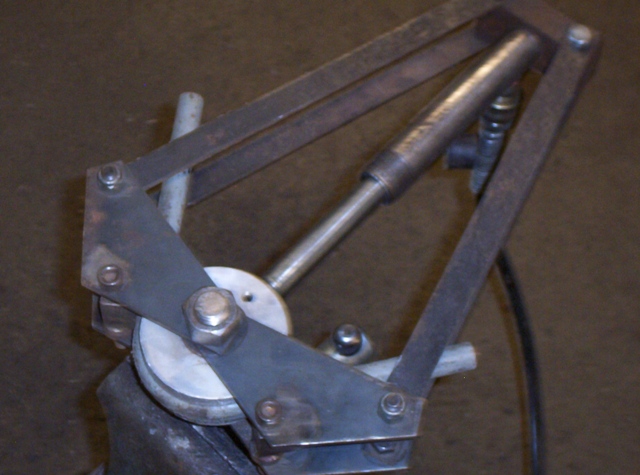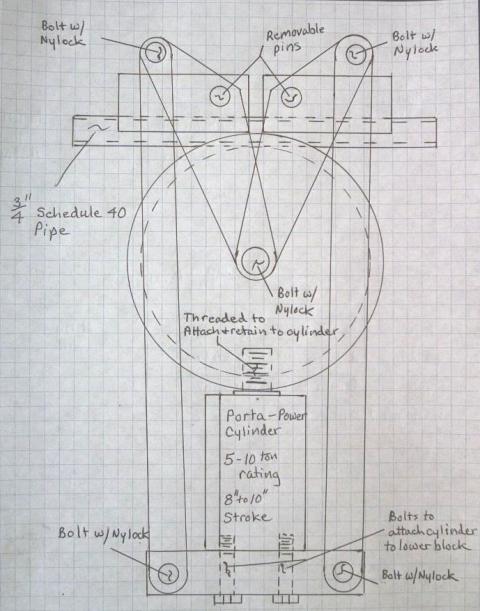Hello ctacker, thanks for reminding me of that. Yes, you are correct about the safety of homemade devices and stored energy in mechanical devices. The best advice I can give to anyone is not to trust any mechanical device with the possibility to injure you. I don't mean not to use anything, I do mean to carefully inspect the item and determine which direction things will be going should there be a failure. In the case of this bending unit, always standing behind the cylinder and not standing over, under, to either side, or in front of the unit will generally provide an individual with the best level of safety. Anything can fail, when using mechanical items understanding where the stresses are and the results of various failures with respect to direction of shrapnel, parts, and pieces will save anyone a considerable amount of grief. I would hope that anyone who uses a design for an item that I have posted or anyone else has posted will keep in mind the possibilities for injury that could result from interpretations of the design and purpose of these tools. Consider that these items are conceptions of individuals and probably not engineered and tested designs.
I watched a pressbrake operator bending a piece of 3/4" A514 8' long x 6' wide, when he made the first hit on the part to bend a lip on it, it snapped into two pieces due to being bent with the grain of the material as opposed to bending against it. Fortunately in this case everyone was where they needed to be and the only real result of this mishap was a destroyed part and ringing in the ears of anyone without ear protection. It wasn't an accident that this operator wasn't hurt, he knew and respected the possibilities of injury from failures in a situation such as this one and religiously payed attention to the possibilities of failure and what the results might be. I have worked around a fair amount of heavy equipment and have seen the results of pulling final drive sprockets off of crawler tractors. With the sprocket mounted on a tapered output shaft and a hydraulic puller attached, when the sprocket finally gives and comes off you will often times watch a 200 lb or more chunk of iron go flying across the shop. In this case you make allowances for it's flight path and be sure that no one happens to be in the area when the time comes. I have personally witnessed a number of different types of failures of equipment and associated hardware and I always try to understand the reason for the failure and the possible fixes to have prevented it. DON'T take safety for granted, take an active role in promoting it and keeping from becoming a statistic with regard to it. Thanks again, ctacker, Best regards, Allan Oh and by the way I'm staying dry, but my routes for making it to work are being compromised rather heavily with the H20 that keeps falling around here.




